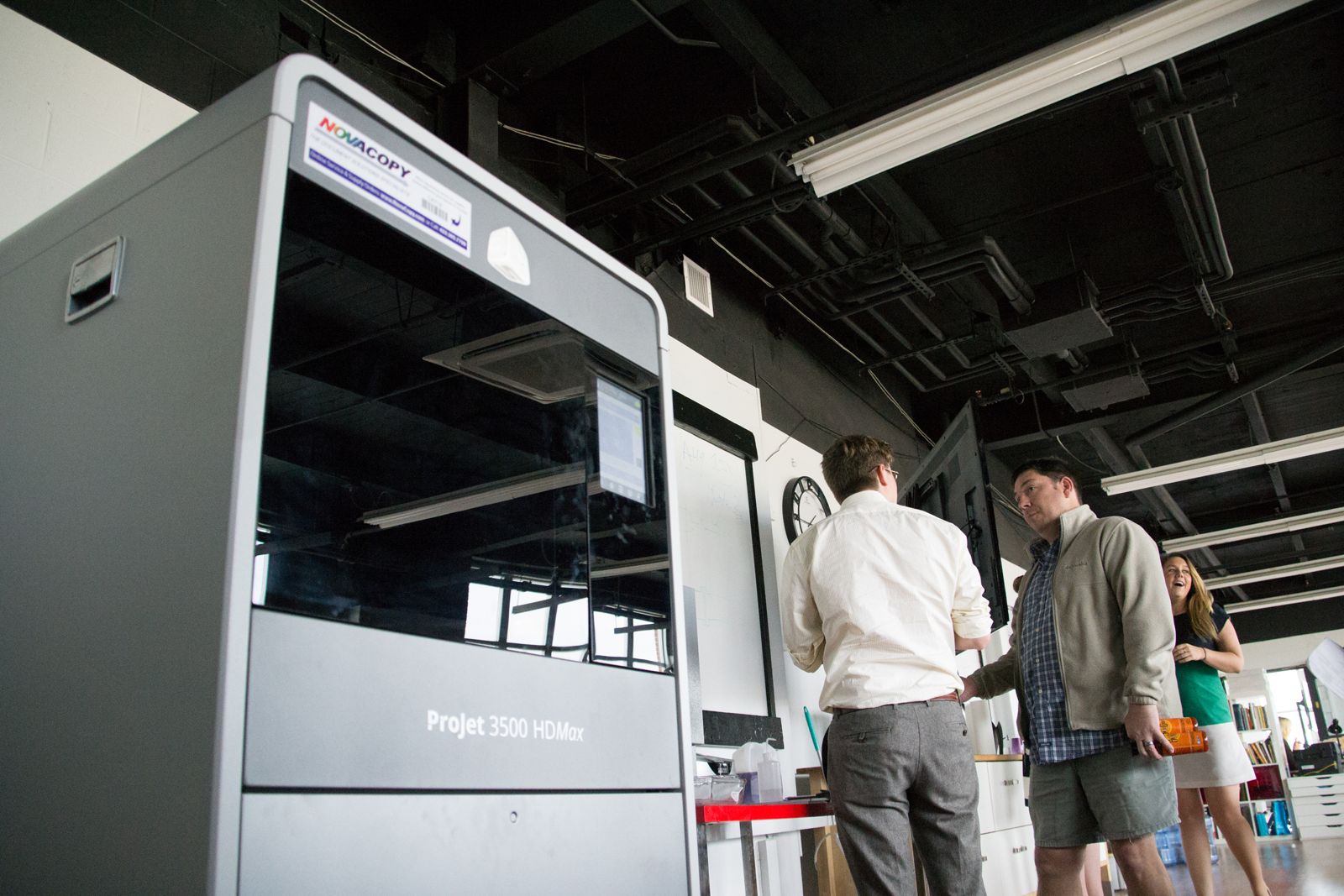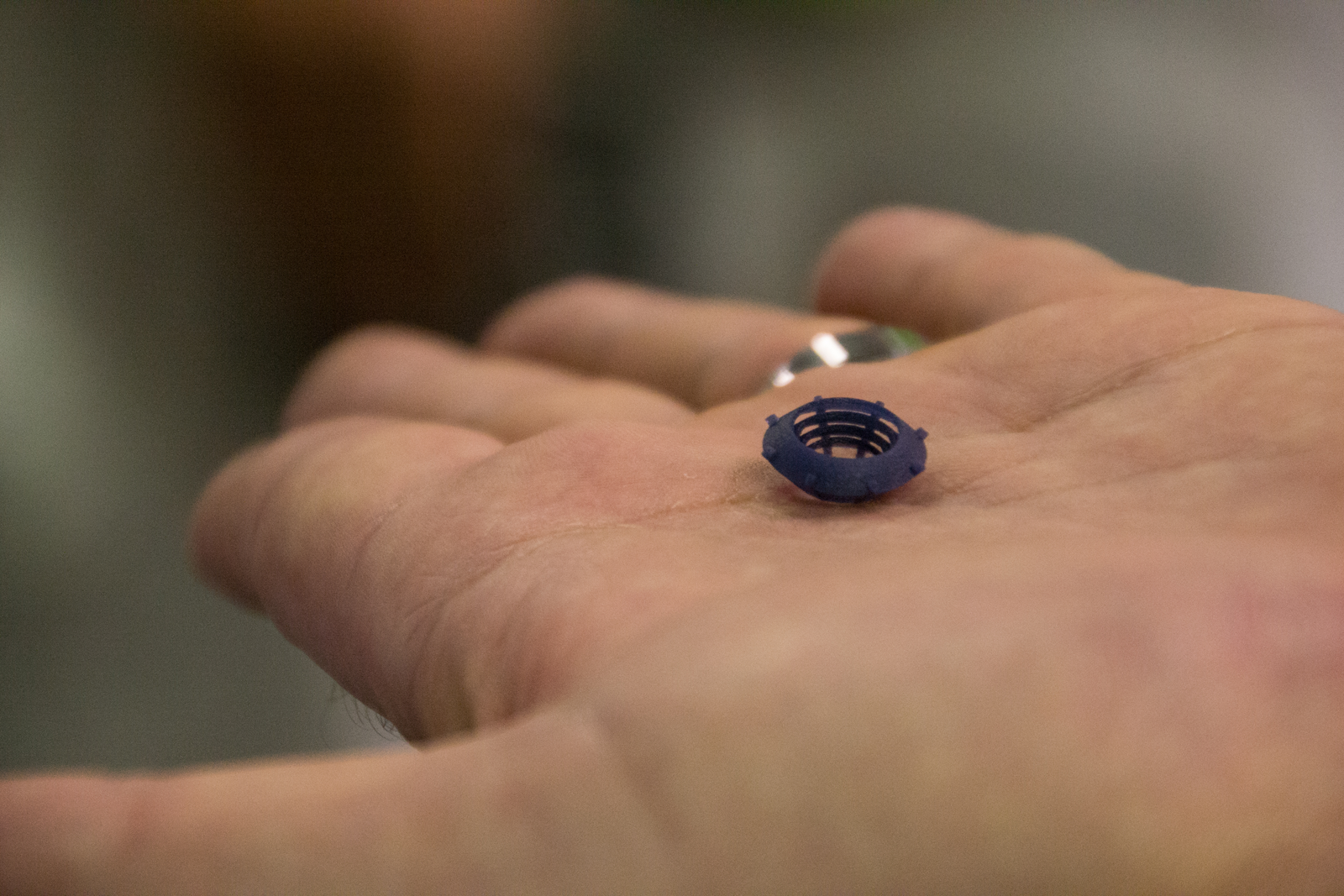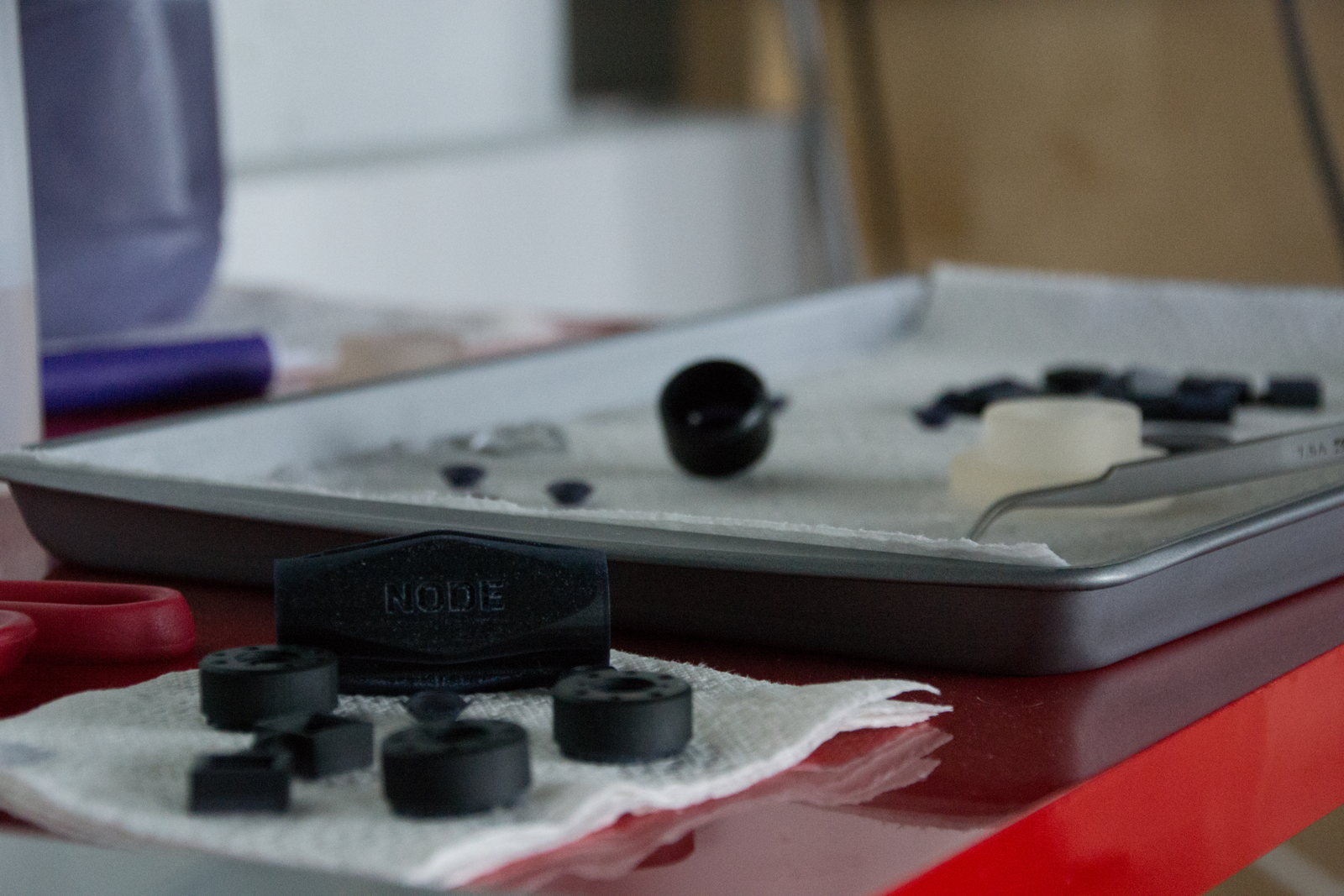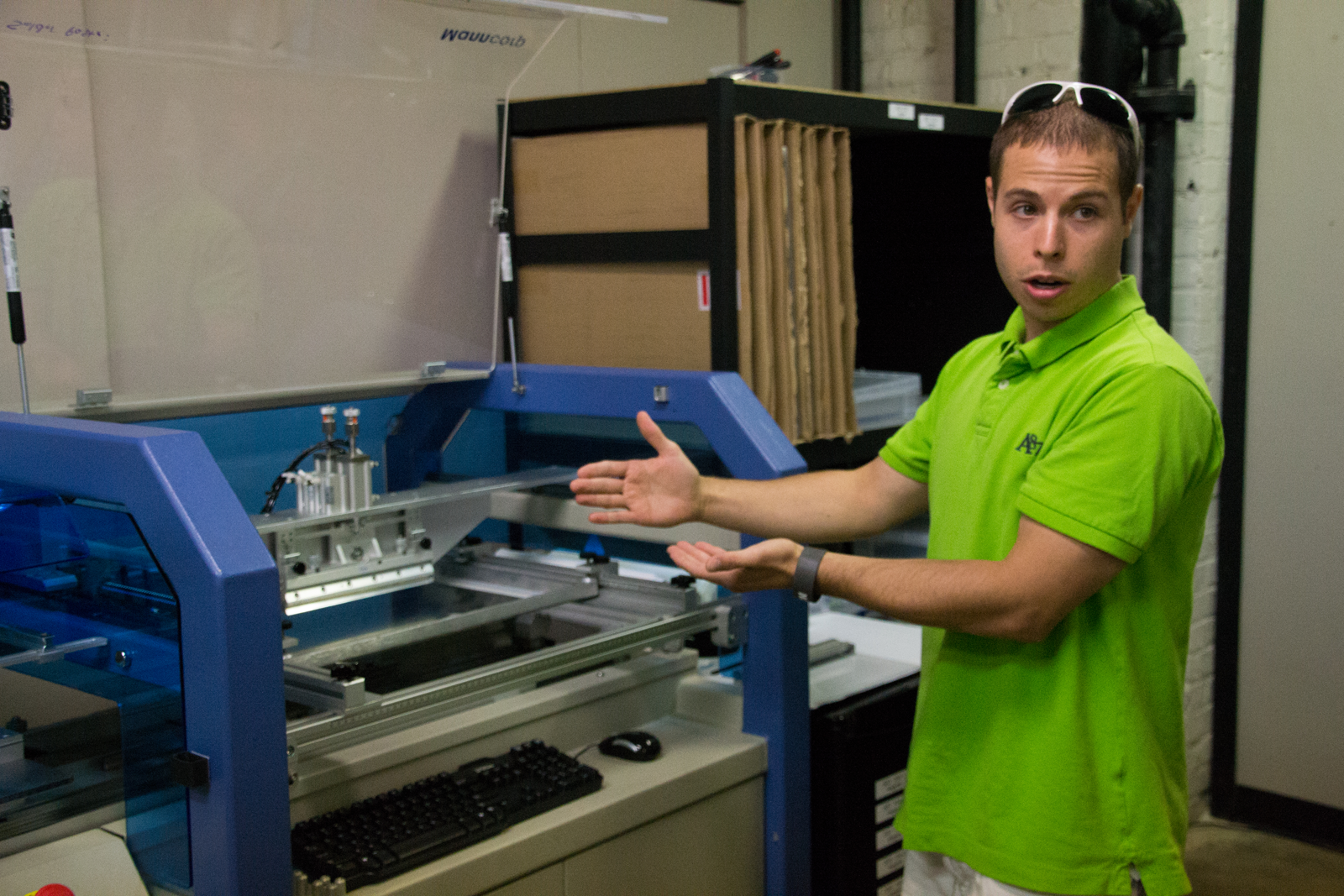In our travels to a number of expos, my wife, Danielle, and I have seen a lot of 3D printed prototypes and final production parts and we’ve read about more than we can count, but we haven’t been able to see these pieces in an actual manufacturing operation. In Chattanooga, we got our first glimpse of 3D printing used in both the development and end production of a really exciting new technology, the Node, from Variable, Inc.

The Therma (which comes in an even more powerful Pro model and more adaptable Thermacouple model) is a laser-pointer turned thermometer that, when you point it at an object, can read its surface temperature. The CO2 gives the Node the ability to measure CO2 levels in the air, while the Oxa add-on expands these air sniffing abilities to measure carbon monoxide, nitric oxide, nitrogen dioxide, chlorine gas, sulfur dioxide, or hydrogen sulfide indoors.
All of the modules and various iterations of the Node were first 3D printed to design each component perfectly for final production. Though the company started with a desktop 3D printer, Variable was eventually able to get their hands on a 3D Systems ProJet 3500 HDMax 3D printer, purchased through local reseller Nova Copy, to more accurately test their parts. And, when it came to their latest module, the Chroma, Variable even used the machine for an end-production component.
One of the neatest parlor tricks that the Node can perform uses the Chroma, which allows users to read colors in their environment. By placing the Chroma, attached to the end of the Node, against an object, say a bathroom tile in your home, it will register the color and match it against a number of color indices. That way, you can head into Sherwin-Williams and pick up a can of paint that best goes with your bathroom floor. You can watch a video about Chroma below:
When producing the Chroma, Variable realized that they needed to custom make their own part and that it couldn’t be manufactured by any other method. Fortunately, they had their own 3D printer, which they now use to mass manufacture the tiny piece for every Chroma module they make.
Touring the facility with Kathryn Foster, Director of Small Business and Entrepreneurship at the INCubator, we got to see Variable’s operation, and a demo of its flagship product, up close. To see it match the color of a Post-It note exactly or measure the temperature of the wall, the AC unit, and human skin was fun enough, but getting a look at their production facility was the truly fascinating part of our tour.
The company takes up a small part of the INCubator, with which it performs all almost all aspects of design and manufacturing. Modifying sensors on the market and writing the accompanying software, the team creates each module in-house. After 3D printing prototype enclosures for the sensors on the ProJet, the final designs are shipped to China to injection mold only outer metal shells for the Node. Custom PCB boards are ordered from a local manufacturer and shipped back to their HQ, where the team uses a small, high-tech assembly line of machines to produce the microboards for each module.
First, a stencil printer lays down conductive soldering paste into the exact pattern necessary for the chips. After removing a tray of PCB boards traced with soldering paste, the tray is placed into a separate pick and place machine that applies Variable’s chips onto the array of PCB boards. The tray is then carried over to a reflow oven that heats the soldering paste, soldering the chips into place. The PCB boards are slipped into their metal enclosures, ready to turn the Node into a super sensing device.
In some ways, I realized, the Node is similar to another product being developed by Fab Lab Barcelona, called the Smart Citizen. Using an open source design, the Smart Citizen allows users to register the light, sound, and air quality of the surrounding environment, which is then uploaded to a website giving the geospatial location of the data. This allows users to map their environments so that they can curate such important information as the Carbon Monoxide and Nitrogen levels around the world.
Running short on time, I didn’t have an opportunity to ask if the Node would ever be open source, but they did tell me that they plan to incorporate a piece of code that allows users to easily track the location of where they are capturing data. In the future, Variable hopes to make it possible for someone to leave the Node in a location, measure the environment with one of their modules, and then recover the device. And, upon syncing it with their smartphone, upload all of the data captured over a long period of time.
Though Variable is just one of the first companies in the INCubator to take full advantage of 3D printing technology, it’s definitely not the last. As 3D printing companies from GIGTANK, like Feetz, establish themselves in Chattanooga, more start-ups are likely to flock to the INCubator to grow into a permanent part of the city’s landscape.
All photos taken by Danielle Matich of Volim Photography.








